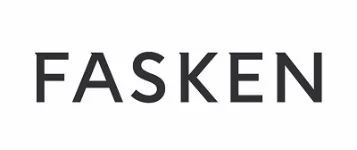- within Government and Public Sector topic(s)
- with Finance and Tax Executives
- in Canada
- with readers working within the Environment & Waste Management, Metals & Mining and Retail & Leisure industries
The Canadian Securities Administrators (CSA) have proposed the replacement of National Instrument 43-101 Standards of Disclosure for Mineral Projects (NI 43-101), which has remained largely unchanged for over a decade. This may soon change with the replacement of NI 43-101 planned by the CSA (the Proposal).
The Proposal would be fairly significant in certain respects, aiming to modernize and streamline disclosure requirements for mining issuers. It would recast mining issuers' disclosure obligations and could raise potential complications. At least, some adjustments in mining issuer practice relating to disclosure would be needed.
Given the consultations with industry already undertaken by the CSA, we expect the finalized changes would closely follow the Proposal. That said, the CSA will still be accepting comments until October 10, 2025. This may therefore be the industry's last opportunity to influence any potential changes to NI 43-101. Should mining issuers have any comments regarding the Proposal, we encourage them to respond directly to the CSA or through Fasken.
Brief Background
The Proposal reflects the CSA's aim to adjust mining issuer disclosure to account for shifts in industry practice, regulatory matters and market expectations since NI 43-101's last significant update 14 years ago. In addition to NI 43-101 itself, it includes proposed changes to Form 43-101F1 Technical Report and Companion Policy 43-101CP.
The Proposal is the product of input gathered by the CSA following its publication in April 2022 of Consultation Paper 43-401.1Feedback was collected through, among other things, continuous disclosure reviews, and consultations with issuers and industry stakeholders, including indigenous groups.2A near-final draft of the Proposal was released in advance of PDAC 2025 last February specifically to encourage industry discussion at and after the event.3
Overall, the CSA's stated goal is to "modernize and streamline Canada's mining disclosure regime and continue to protect investors, without imposing an undue regulatory burden on market participants." The CSA also seeks to "preserve Canada's leading role in facilitating efficient capital formation for mining issuers."
Select Features of the Proposal in Brief
Issuers intending to submit any comments or concerns regarding the Proposal may take intoconsideration, without limitation, the following aspects of the Proposal:
Relevant vs Material Information
The Proposal replaces the phrase "material scientific and technical information" with "relevant scientific and technical information" as it relates to the content of a technical report. The CSA states this change is intended to clarify that the qualified person is not expected to determine materiality. Instead, the qualified person is expected to determine what information is relevant to the mineral project for the purpose of the technical report. Relevance is a broader standard than materiality, and may require qualified persons to exercise greater scrutiny in assessing appropriate disclosure.4
Mineral Resource Disclosure
The Proposal imposes more prescriptive disclosure obligations regarding mineral resource estimates than currently apply. These require, at a high level, "(1) information regarding how reasonable prospects for eventual economic extraction were determined, (2) additional disclosure regarding the classification of mineral resource estimates, (3) the issuer's attributable percentage of resources for fractional ownerships, and (4) project-specific risk disclosure for mineral resource estimates." Amongst other things, the Proposal's prescriptions should be considered in light of situations where an issuer and qualified person would be required to take responsibility for a historical estimate even where they did not participate in its preparation.
Discussion of Adjacent Properties
The CSA notes that required disclosure regarding adjacent properties "is often used for promotional purposes in technical reports and other documents." The Proposal continues to allow issuers to discuss adjacent mineralization, but cautions against "focus on this type of disclosure" and requires the inclusion of cautionary statements that this information is not necessarily indicative of mineralization on the issuer's mineral project. The issuer will also be expected to explain the relationship between the issuer's mining project and the neighboring property.
Issuers Without Advanced Projects
NI 43-101 currently distinguishes between an "early-stage exploration property" and "advanced property" and only applies certain disclosure requirements to the latter. The Proposal removes these definitions and makes 43-101F1 applicable to all mineral project stages. Authors of technical reports can indicate where they believe specific items are not relevant. However, depending on the circumstances, this may require close consideration.
Application to Written Disclosure of Non-Material Properties
NI 43-101 currently prescribes certain requirements (including to provide specific additional information) for written disclosure of scientific and technical information regarding data verification, exploration information, and mineral resources, and mineral reserves, if the disclosure relates to a project material to an issuer. The Proposal would extend these requirements to apply even for disclosure of an non-material mineral project. While there is an exception in certain circumstances where a technical report was previously filed containing such information, an issuer will often not have a previously filed technical report on a non-material project. In addition, the Proposal clarifies that all disclosure of scientific and technical information must be based on information prepared or approved by a qualified person, even relating to non-material properties.
Data Verification
The Proposal's data verification requirements address the CSA's experience of "inadequate disclosure of data verification at every development stage of a mineral project." In particular, the CSA states that many qualified persons "incorrectly apply data verification only to exploration and drilling activities and not to other technical data, such as metallurgy or mining methods."
The Proposal's response is to require specific disclosure regarding how scientific and technical data was verified by a qualified person in a section by section manner, including drilling results, mineral resource estimates, metallurgy, and mining methods. This includes additional disclosure by the qualified person regarding the steps taken to confirm the data was generated using industry standards, as well as the qualified person's opinion on the data's adequacy. The Proposal also removes the current ability to explain a failure to verify data, and instead requires the qualified person to give an opinion on the adequacy of the data verification.
Elimination of Disclaimers
NI 43-101 currently limits the use of disclaimers in a technical report but not in other disclosure. As stated by the CSA, this has resulted in issuers using disclaimers in other documents "without regard for the veracity of the disclosure of scientific and technical information about a mineral project." In response, the Proposal extends the prohibition on including any disclaimer of responsibility or reliance to any scientific or technical information (i.e., whether in a technical report or otherwise). Qualified persons will be required to assume responsibility for all scientific and technical content they approve.
Foreign Codes
Foreign issuers are no longer permitted to rely on other reporting codes. As such, technical report disclosure by foreign issuers must conform with the Definition Standards for Mineral Resources and Reserves (the CIM Definitions) of the Canadian Institute of Mining, Metallurgy and Petroleum (the CIM).
New Definitions
The CSA has confirmed it is working with the CIM to include additional definitions in a revised version of the CIM Definitions. Such definitions will include, notably, the inclusion of the term "scoping study" in replacement of "preliminary economic assessment" and the term "exploration target" in replacement of "target for further exploration". The Proposal continues to refer to and incorporate by reference the definitions of "pre-feasibility study" and "feasibility study" as well as the various categories of mineral resources and reserves in the CIM Definitions.
Royalty Companies
An issuer that has only a royalty or similar interest in a mineral project is no longer required to file a technical report.
Totalling Inferred Resources
The prohibition on adding inferred mineral resources to other categories of mineral resource estimates to disclose total mineral resources has been removed provided that individual resource categories are also disclosed separately.
Indigenous Matters, "Rightsholders" and Communities
The Proposal requires certain additional disclosure regarding Indigenous matters, but leaves disclosure of other Indigenous matters to an issuer's ongoing disclosure requirement.5This follows from feedback received from Indigenous groups and related stakeholders, and the CSA views such additional disclosure as needed for investors to "fully understand and appreciate the risks and uncertainties relating to a mineral project."
The question faced by the CSA was whether specific disclosure of an issuer's relationships with Indigenous Peoples should be mandatory in a technical report, or whether such matters are more appropriately left to the issuer's continuous disclosure obligations. In particular, many commentators noted that technical reports are milestone-driven documents that support an issuer's scientific disclosure regarding its mineral projects and as such, do not align naturally with the disclosure of Indigenous matters. The approach adopted by the Proposal is to require specific disclosure in a technical report of (1) any permit required under law regarding Indigenous Peoples, rightsholders and communities, (2) the dates and status of negotiations with Indigenous Peoples, rightsholders and communities, and (3) any agreements entered into with Indigenous Peoples, rightsholders and communities.
Relatedly, the Proposal replaces the terms "local" and "social and community impact" with the broader term "rightsholders". The Proposal also requires that technical reports now include the dates and sources of any environmental, permitting, and social disclosure, thereby allowing the public to determine whether the information can be considered current.
Concluding Comments
The CSA's proposed overhaul of NI 43-101 is a significant industry development. It also comes amid increasing global competition by exchanges to attract and retain mining issuers. Issuers with any material comments or concerns regarding the Proposal are encouraged to submit them to the CSA before the close of the comment period on October 10, 2025.
The Proposal's changes should be considered as a whole, in consultation with the issuer's qualified persons, and with a view to practical and operational consequences. For example, the Proposal's revised treatment of mineral resource estimates should be considered alongside the Proposal's revised treatment of data verification and the elimination of disclaimers. Another example is how the Proposal's additional disclosure requirements regarding Indigenous, rightsholders and community matters might apply where the issuer is simultaneously engaging in otherwise confidential discussions or negotiations with more than one of these groups with potentially overlapping interests or claims.
Regardless of whether an issuer has any final comments on the Proposal, they should begin planning for the operational adjustments necessary to meet its revised requirements.
The authors thank Paul Blyschak (Counsel) and Yianni Patiniotis (summer student) for their assistance in the preparation of this article.
The content of this article is intended to provide a general guide to the subject matter. Specialist advice should be sought about your specific circumstances.








